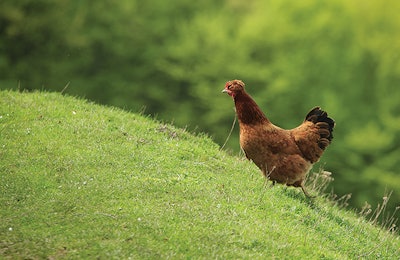
“Animal welfare is an ethics-based science,” said Dr. Richard Blatchford, extension specialist, University of California-Davis. He discussed the poultry behaviors that are thought to be indicators of welfare at USPOULTRY’s Live Production, Welfare & Biosecurity Seminar, in Nashville, Tennessee, on Tuesday. Blatchford said the producers should try to promote the expression of positive bird behaviors while limiting expression of negative and nuisance behaviors.
Using science to explain as much as we can about all aspects of poultry welfare and developing measurements -- behavioral, physical and physiological -- is important. After these indicators are established, the measurements need to be viewed not just through the eyes of scientists and poultry husbandry specialists, but also of the average consumer.
There was some discussion at the conference as to why the Coalition for a Sustainable Egg Supply research, which researchers and the industry both thought favored enriched cages, didn’t prevent many major foodservice and retail shell egg customers from making future cage-free purchase pledges. McDonald’s executives said the reason for switching to cage-free eggs was to align with consumers' views on cage-free production, what they think is responsible, and how those views might shift over time.
This example should signal to poultry producers that it isn’t just about having science on your side; the industry will need to make sure they pick the right husbandry practices to defend, and abandon ones where defense is pointless. For example, maceration of culled chicks and poults is an example of something that the industry is probably better off just replacing as a means of euthanasia. It won’t matter what the science is if the optics are terrible.
Broiler producers are now facing a conundrum similar to the one egg producers faced just a few years ago. Both sectors have all-time high livability and bird performance. By all traditional measures, both industries can proudly say that, by conventional measures, bird welfare has never been better. Broiler producers should take a lesson from the egg industry’s experience defending cages and take a good hard look at practices to make sure the science and the optics are on their side if current practices are to be defended.
Maintaining consumer access to chicken meat from modern breeds is the most important aspect of the broiler welfare debate. Any movement to slower-growing breeds which eliminates consumer choice is a huge step backwards for environmental sustainability and for affordability of chicken for consumers, which would not result in improved bird welfare. This is the hill that the industry needs to defend. Broiler producers need to avoid fighting battles over less significant husbandry issues if it damages the industry’s credibility with consumers.

















